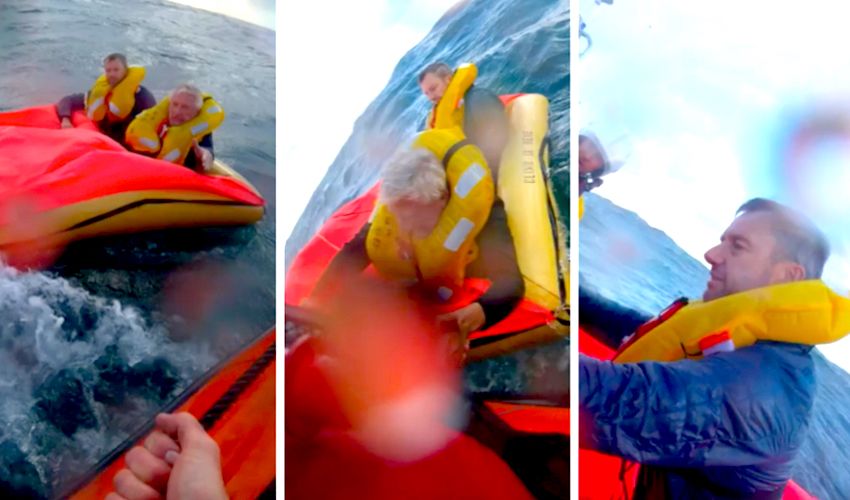


An official investigation has not been able to identify the cause of a power failure which forced a light aircraft flown by a former fighter pilot to ditch into the sea.
Former RAF Tornado pilot Duncan Laisney and experienced aviator Paul Clifford were rescued by an RNLI lifeboat crew after their single-engine plane hit the water in a controlled landing on the afternoon of 3 November.
An Air Accidents Investigation Branch report released this afternoon has set out the final moments of the flight, but stated that the "cause of the power loss was not established".
Video: In footage shared by the RNLI, Mr Laisney and Mr Clifford can be seen climbing from their water-logged liferaft onto the RNLI's vessel.
Mr Laisney, who flew combat missions over Iraq and Afghanistan, was training Mr Clifford when the aircraft began to lose power at 2,000ft.
The report states that the pair tried various methods to rectify the problem, including switching on the electric fuel pump and selecting alternative fuel tanks, but none had any effect.
Seconds later, it became clear they had to ditch and they declared an emergency.
The pair ensured that the life raft and 'grab bag', which contained a personal locator beacon and had been placed behind the seats before the flight, were accessible.
Mr Laisney then turned the aircraft into the wind to reduce groundspeed and prepared to touch down on the water.
Describing the moment of impact during an interview with JEP and Bailiwick Express last month, Mr Laisney said: "The landing was a little bit like the film Sully. We had an impact onto the water with a rapid deceleration and a big surge of water that came over the canopy.
"I think it was just spray that came over but [Mr Clifford] thought we may have submerged into the water and came back out again. We don’t really know but we had that enveloped feeling of being under water.
"Quickly, that all dissipated and we found ourselves floating."
The pair, who were already wearing life-jackets, then got out and stood on a wing as they inflated the liferaft, which they jumped in to when the aircraft began to sink about three minutes after the ditching.
The report concluded: "The aircraft was not recovered and there were no photographs or recordings from onboard the flight... The possibility of contaminated fuel is considered unlikely but the cause of the power loss was not established."
The AAIB said that the successful ditching highlighted the importance of "prior planning, continuing to 'fly the aircraft' and carrying appropriate safety equipment when flying over water."
You can read the full report HERE.
Duncan Laisney opened up about the experience on a recent episode of the Bailiwick Podcast - listen below or on your favourite podcast provider...
Comments
Comments on this story express the views of the commentator only, not Bailiwick Publishing. We are unable to guarantee the accuracy of any of those comments.